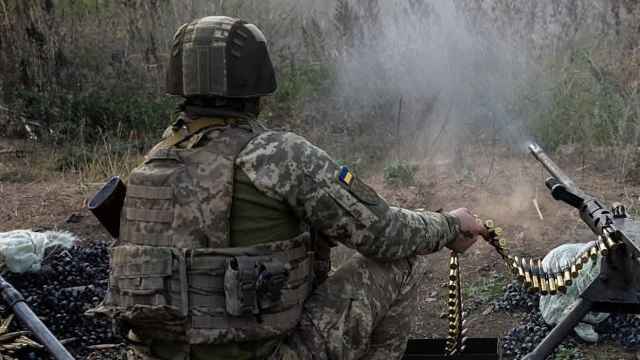The gold industry's decision to hedge against falling prices for the metal cost major miners billions less than a decade ago, when bullion soared, leaving them trapped in loss-making contracts.
But as the gold boom shows signs of coming to an end, miners and analysts question whether hedging, in a different form, could make sense again for producers tackling challenging deposits, rising costs and demands from their lenders.
Russian-focused miner Petropavlovsk, which is among the most highly geared miners in the sector, said last month it would hedge almost half its output to March 2014. Analysts say the hedge cuts the potential for an earnings drop, given Petropavlovsk's spending plans and a stretched balance sheet.
"Hedging got a bad reputation because of multi-year hedge books. At certain points in time, for certain companies, it makes sense — if you know why you are hedging and for what purpose," Canaccord Genuity analyst Peter Mallin-Jones said.
"For Petropavlovsk, with high debt levels and ongoing capex, it makes sense to make sure you have cash coming in when you need to make payments to suppliers."
Hedging through selling production forward was a popular way for miners to lock in prices in the late 1990s and early 2000s.
However, as spot gold prices soared from $250 an ounce at the end of 2000 to 2011's record $1,920.30 an ounce, hedged miners lost out on the chance to capitalize.
Big-name producers like Barrick Gold and AngloGold Ashanti were hit by heavy charges.
Both Barrick and AngloGold issued equity to free themselves from toxic hedge books that were obliging them to sell gold at prices below spot, capping revenues even as costs were rising.
AngloGold's move to scrap its hedge book — which stood at 11.3 million ounces in early 2008 — cost it $6 billion, but still saved the company a further $4 billion.
"As an industry, there are too many scars from the last 15 years to see a big move back to hedging," Nomura analyst Tyler Broda said.
"The management changes you have seen at the biggest producers does lend itself to prudence, which could imply hedging, but no one wants to be the first to move, given how risk averse the mood is."
Barrick Gold this week reiterated its intention to steer clear of further hedging. "Our hedging policy remains in place," it said. "[We] will not hedge gold." AngloGold also told Reuters it had no plans whatsoever to hedge production.
But Mark Bristow, chief executive of FTSE 100 miner Randgold, said he would not exclude hedging. While his mainstream projects may not require it, it could help limit risks for more marginal ventures like the Morila gold mine in Mali.
"We believe there is more upside in the gold price," he said. "Certainly there is a long way to go before we would consider hedging for our [main] projects."
Gold-Price Rally Loses Steam
Bristow's pragmatic approach, and limited hedging as seen at Petropavlovsk, tackling a challenging expansion, could mark a softer attitude to new hedging as some analysts, including Goldman Sachs, now speculate that gold's price rally could be topping out.
A drop would place miners in the unenviable position of facing stalling prices at a time costs are on the rise.
Petropavlovsk chairman Peter Hambro said the company had decided to hedge to cut risk from gold price fluctuations.
"The board's long-term view was that at a time of big investments, we were too heavily exposed to volatility in the gold price," he said.
"Whilst we are investing in construction, development and so on, we should have greater certainty on the price, and this program protects us against any volatility on the market. To take an additional risk on the gold price, we considered, would be too much."
Gold prices are on track to fall for a second successive quarter for the first time in more than a decade. They are currently down nearly 5 percent this year at around $1,600 an ounce, having twice failed to rise back above $1,800 in 2012.
Hedging would theoretically allow miners to lock in current prices, which are still well above their five-year average of $1,295.
However, with risks for another big price rise in gold still outstanding, few are willing to take the risk.
"Everything I hear is that most gold equity investors remain very opposed to hedging," Macquarie analyst Matthew Turner said. "They still want gold price exposure through the shares. That doesn't seem to have changed."
The greatest fear for miners is to face the squeeze of a decade ago — flat revenues and costs rising alongside spot prices.
Metals consultancy GFMS estimates that producers' average cash costs rose to a new high of $727 an ounce in the first half of 2012, up 19 percent year on year. The average all-in cost of production was estimated to have risen to $1,050 an ounce.
This means that, for the short term at least, efforts to sell production forward at a fixed price are likely to be limited to companies that need to secure cash flow through a period of uncertain prices — for example, if planned spending and debt is high, as for Petropavlovsk — or to those raising financing, when hedging is demanded by lender banks.
"The hedging at Petropavlovsk is definitely Petropavlovsk specific," Nomura's Tyler Broda said. "But if the market starts to worry about the solvency of companies — which perhaps is what is happening with Petropavlovsk — then hedging is a prudent measure."
A Message from The Moscow Times:
Dear readers,
We are facing unprecedented challenges. Russia's Prosecutor General's Office has designated The Moscow Times as an "undesirable" organization, criminalizing our work and putting our staff at risk of prosecution. This follows our earlier unjust labeling as a "foreign agent."
These actions are direct attempts to silence independent journalism in Russia. The authorities claim our work "discredits the decisions of the Russian leadership." We see things differently: we strive to provide accurate, unbiased reporting on Russia.
We, the journalists of The Moscow Times, refuse to be silenced. But to continue our work, we need your help.
Your support, no matter how small, makes a world of difference. If you can, please support us monthly starting from just $2. It's quick to set up, and every contribution makes a significant impact.
By supporting The Moscow Times, you're defending open, independent journalism in the face of repression. Thank you for standing with us.
Remind me later.






